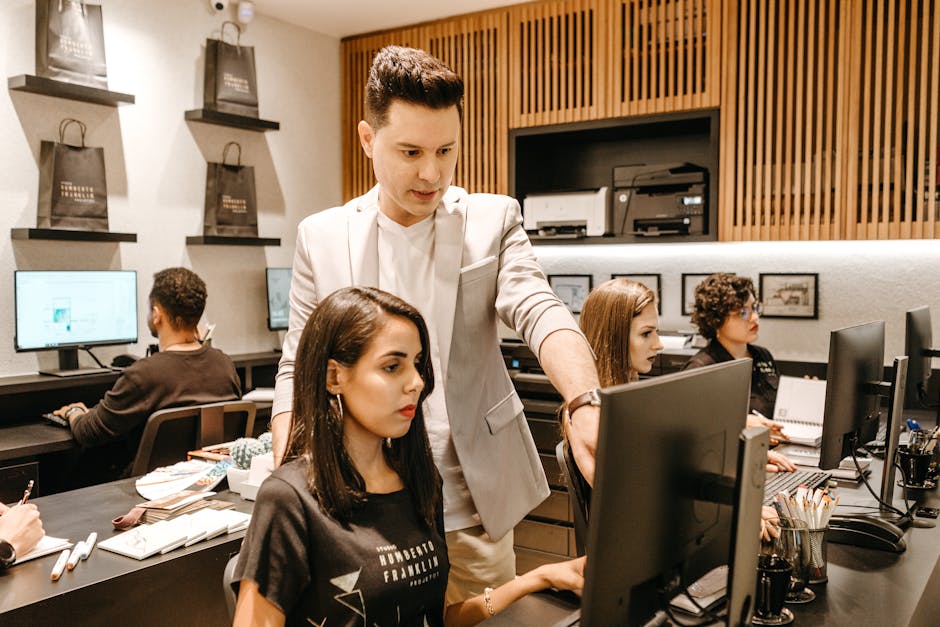The Role of Technology in Modern Dining
In todays fast-paced world, technology has infiltrated almost every aspect of our lives, including how we dine. From online reservations to interactive menus, and even robot servers, the landscape of dining has been significantly transformed by technological advancements. This article delves into the various ways in which technology has revolutionized the dining experience, exploring its impact on both customers and restaurant owners alike.
The Evolution of Dining Technology

Technology has come a long way in the realm of dining, with innovations continuously reshaping the industry. One of the earliest forms of dining technology was the invention of the cash register by James Ritty in 1879, which revolutionized the way restaurants handled transactions. Fast forward to the present day, and we see restaurants implementing cutting-edge technologies such as AI-powered chatbots for customer service and blockchain for supply chain management.
Furthermore, the rise of social media platforms like Instagram and Yelp has transformed how diners discover and share their dining experiences. Restaurants now rely on digital marketing strategies to engage with customers and promote their brand. Online food delivery services like UberEats and DoorDash have also become increasingly popular, allowing customers to enjoy restaurant-quality meals from the comfort of their homes.
Enhancing the Dining Experience

Technology has played a crucial role in enhancing the dining experience for both customers and restaurant owners. Interactive menus and tabletop tablets have become commonplace in many establishments, allowing customers to browse the menu, customize their orders, and even pay their bill without the need for a server. This not only streamlines the ordering process but also provides a more personalized and efficient dining experience.
Additionally, the use of virtual reality (VR) and augmented reality (AR) in the restaurant industry has opened up new possibilities for immersive dining experiences. Some restaurants are now offering virtual tours of their kitchens or using AR to display interactive menu items. These technologies not only add a fun and innovative element to dining but also help customers make more informed decisions about their orders.
The Rise of Online Reservations and Food Delivery

With the advent of online reservation platforms like OpenTable and Resy, diners can now easily book a table at their favorite restaurant with just a few clicks. These platforms not only make the reservation process more convenient for customers but also help restaurants manage their seating capacity more efficiently. In addition, the use of data analytics allows restaurants to optimize their reservation systems based on historical booking patterns and customer preferences.
Food delivery services have also experienced a significant surge in popularity, especially in the wake of the COVID-19 pandemic. Many restaurants have had to pivot to offering delivery and takeout options to stay afloat during lockdowns. As a result, we have seen the rise of ghost kitchens and virtual restaurants that operate solely for delivery purposes, without a physical dining space.
Improving Operational Efficiency

Technology has not only transformed the customer-facing aspects of dining but has also revolutionized the way restaurants operate behind the scenes. From inventory management systems to kitchen automation solutions, restaurants are leveraging technology to streamline their operations and improve efficiency.
For example, some restaurants are using AI-powered systems to predict customer demand and optimize their menu offerings. Others are implementing robotics and automation in the kitchen to speed up food preparation and reduce labor costs. These technologies not only help restaurants operate more efficiently but also ensure consistency in the quality of food and service.
Challenges and Controversies
While technology has brought about many benefits to the dining industry, it has also introduced challenges and controversies. One of the main concerns is the potential loss of human touch in the dining experience. As restaurants rely more on technology for ordering and payment processes, some customers may feel a lack of personal interaction with servers.
Another issue is the digital divide, where certain segments of the population may not have access to the technology needed to fully participate in the modern dining experience. This can create inequalities in access to restaurants and food delivery services, especially for vulnerable populations.
The Future of Dining Technology
Looking ahead, the future of dining technology holds even more exciting possibilities. With advancements in AI, machine learning, and IoT, we can expect to see more personalized and seamless dining experiences. Restaurants may leverage data analytics to tailor menus to individual preferences or use smart kitchen appliances to automate cooking processes.
Virtual dining experiences, where customers can dine with friends and family in a virtual environment, are also on the horizon. These immersive experiences could revolutionize the way we socialize and interact with food. Moreover, advancements in sustainability and food tech may lead to more environmentally friendly dining practices, such as plant-based meat alternatives and zero-waste initiatives.
Common Misconceptions
One common misconception about the role of technology in modern dining is that it is solely focused on replacing human labor. While it is true that technology has automated many processes in restaurants, it has also created new job opportunities in areas such as digital marketing, data analysis, and tech support. Additionally, technology has enabled restaurants to operate more efficiently and offer better service to customers.
Conclusion
Technology has become an integral part of the modern dining experience, transforming how we discover, order, and enjoy food. From online reservations to AI-powered chatbots, the possibilities are endless. As we move towards a more tech-driven dining landscape, it is essential for restaurants to strike a balance between innovation and maintaining the human touch that makes dining special. By embracing technology thoughtfully and strategically, restaurants can create memorable and immersive experiences that cater to the evolving needs of customers.
Whether it’s through interactive menus, virtual dining experiences, or kitchen automation, technology is shaping the future of dining in ways we never imagined. The key lies in harnessing the power of technology to enhance the dining experience while preserving the essence of what makes dining a cherished social activity. As we continue to witness the rapid evolution of technology in dining, one thing is certain the future of dining is bright, exciting, and delicious.




